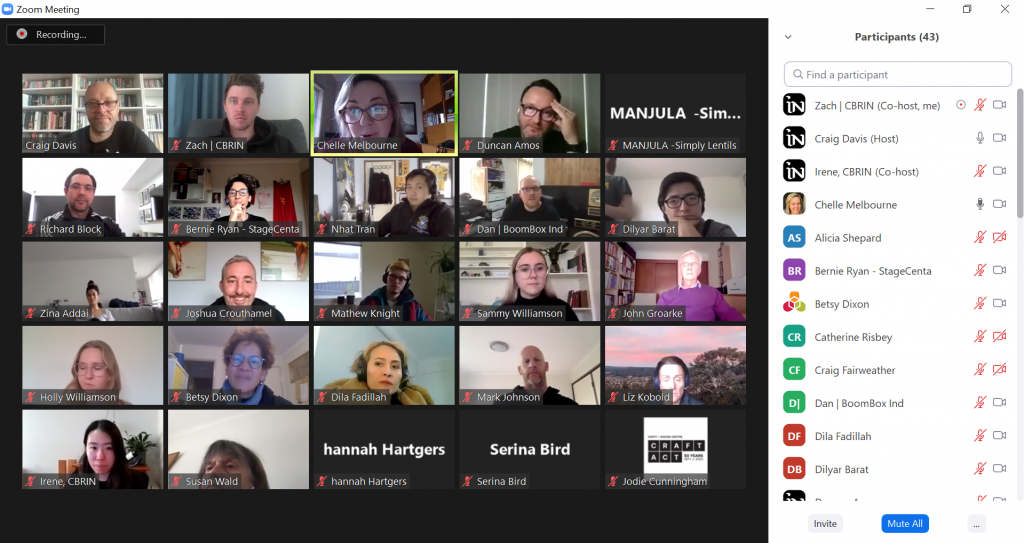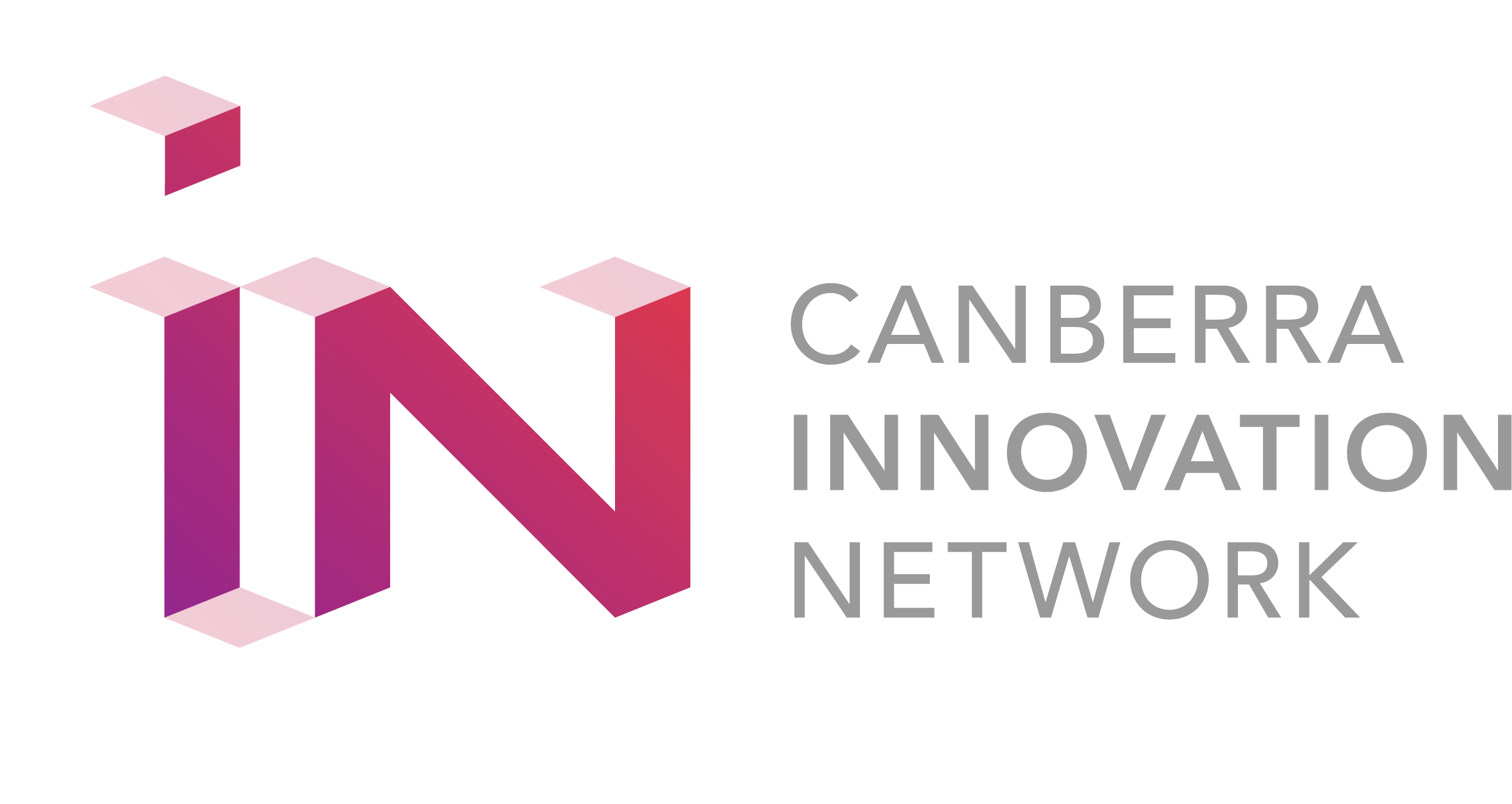- 30 August 2021
- Posted by: Canberra Innovation Network
- Categories: General News, Weekly Innovation Challenge

As part of the Canberra Innovation Network’s commitment to supporting our community of entrepreneurs during the ACT lockdown, we’ve reinstated our popular Weekly Innovation Challenge. The Weekly Innovation Challenge is for every entrepreneur, founder and business leader. If you’re growing a business, developing a product or just want to change the world, our goal is to show you relevant new ideas and challenge you to rapidly try them out. Every Lockdown Monday at 2pm we will introduce a topic, host guest experts, allow room for questions and end by setting a useful, actionable challenge for you to work on.
In the second instalment of the Weekly Innovation Challenge we discussed Engaging Customers and Partners from Home with special guest hosts Michelle Melbourne and our own SME (small- and medium-sized enterprise) Director, Duncan Amos. We’d like to share a video of the event for those who weren’t able to attend.
A big thank you to everyone who participated. And be sure to register now to join us on 6 September for the next challenge — the Website and Sales Optimisation Masterclass with Matt Bullock.
NB: Below we share notes taken from the live meeting. This is not a transcript and these are not direct quotes; for those, refer to the video above.
Welcome to Week Two of our Weekly Innovation Challenge series! These one-hour webinars are meant to help bring you together and bring you outside of your day-to-day, all while giving you some fresh thinking and support.
Let’s break down what changes to BAU this lockdown has on us. What’s different in your world, and your partners’ / customers’ worlds? In order to engage effectively, empathy is key. And what can I do to add value?
Just be realistic about your creative solutions.
Without further adieu, our hosts Chelle and Duncan!
Chelle! Enterprise software is her world, and she’s built one of the most successful software businesses in the industry, which is all about providing a better customer experience for clients.
She wanted to first acknowledge the diversity of people and businesses on this call. Some have 1, 10, 100 or 1,000 clients in mind. But we should all remember that recessions, hard times and overall “change” is the catalyst behind great things. We’ve been talking about a digital revolution for thirty years, but only in the past two years have we been forced to embrace digital customer dealings (thanks, COVID?!).
And … Duncan! He’s been involved in a number of businesses over the years, and is now the Director of SMEs (small- and medium-sized enterprises) for us here at the Canberra Innovation Network. Duncan was humbled to share the stage with Chelley and discuss strategies for product-based businesses, and the opportunity to make creative moves that one must make when the universe aligns in a certain way.
Chelle’s top five tips:
- Be obsessed by your customer
- Do it better
- KYC: Know Your Customer
- Use data
- Be tribal
Being obsessed with your customer needs to be someone’s role in your company (even if it’s you). Is it written on your walls? Do you walk in their shoes everyday? It isn’t about customer service, it’s customer success. What are your competitors doing in this space? How do you celebrate your customers? Does your internal company culture reflect your obsession with your customer? Don’t consider your customer an “I.D. Ten T” when they have an issue. Think instead about what you can do better today. Can a customer give feedback or share success via a menu option on your website? Do a current analysis and think of the one thing you could do better today (it could be training, it could be delegating, it could be your own reading or adding a link on your homepage), and do it. Customer service is a combination of soft skills that’re difficult to master but increasingly vital to your success.
The way to get 100x better is to get one thing better, a hundred times!
Duncan’s 3 guiding thoughts
- Effective leaders listen first
- Listen to your existing client base, and think about how stale or fresh your relationship is with the people who’ve given you money in the past
- Don’t get bogged down in the lists of potential improvements; instead, just start hacking away
What’s your process? What’s your strategy? Don’t lose sight of your ideal customer (who may or may not be your current customer) and how do they align with your values? Ask them what they like and dislike. Is there friction with that ideal customer and do you have the ability to learn from their complaints?
So, we know the importance of our existing customers now. But how do we get new customers during lockdown? Make a list! Now is a great time to pick up the ole telephone as opposed to relying entirely on email and LinkedIn. And start conversations with “what can I do for you?” Use their language as you speak with them and you’ll relate all the better.
It’s very easy to be defensive when you receive feedback; push hard against that impulse and listen.

Jump over “your” counter and put the ski boots on the kids yourself! (The Thredbo customer service example.) And make that heightened level of TLC a part of how you deal with your customer on a regular basis. Systematize what you can, with a human heart at the front end of the approach.
There are three types of customers.
Type A: Loyal, fits your tribal values
Type B: Hard to define and articulate … but get to know them better so you can promote them to Type A
Type C: Complainers who don’t fit with your tribe. So what do we do with them? Refer them to your competition!
When in doubt, be generous. Be deliberate. Take stock. Have humble, transparent conversations with your customers. “We’re listening” is an easy phrase to add to your website (so long as you do so).
And reach out to this group!
Remember: Smooth waters don’t make good sailors — embrace the challenge.
Weekly Challenge: Identify the ONE thing you can do better for your customers, and just bloody do it!
Last Week’s: Realise one problem I have and share it with someone I trust (“I’m not sure what to do about XYZ” or “I’m worried about ABC”). Saying it out loud is sometimes all I need to do! But other times the input from my team, a friend or another member of the innovation community with an understanding of my industry is just what I need to solve this.

